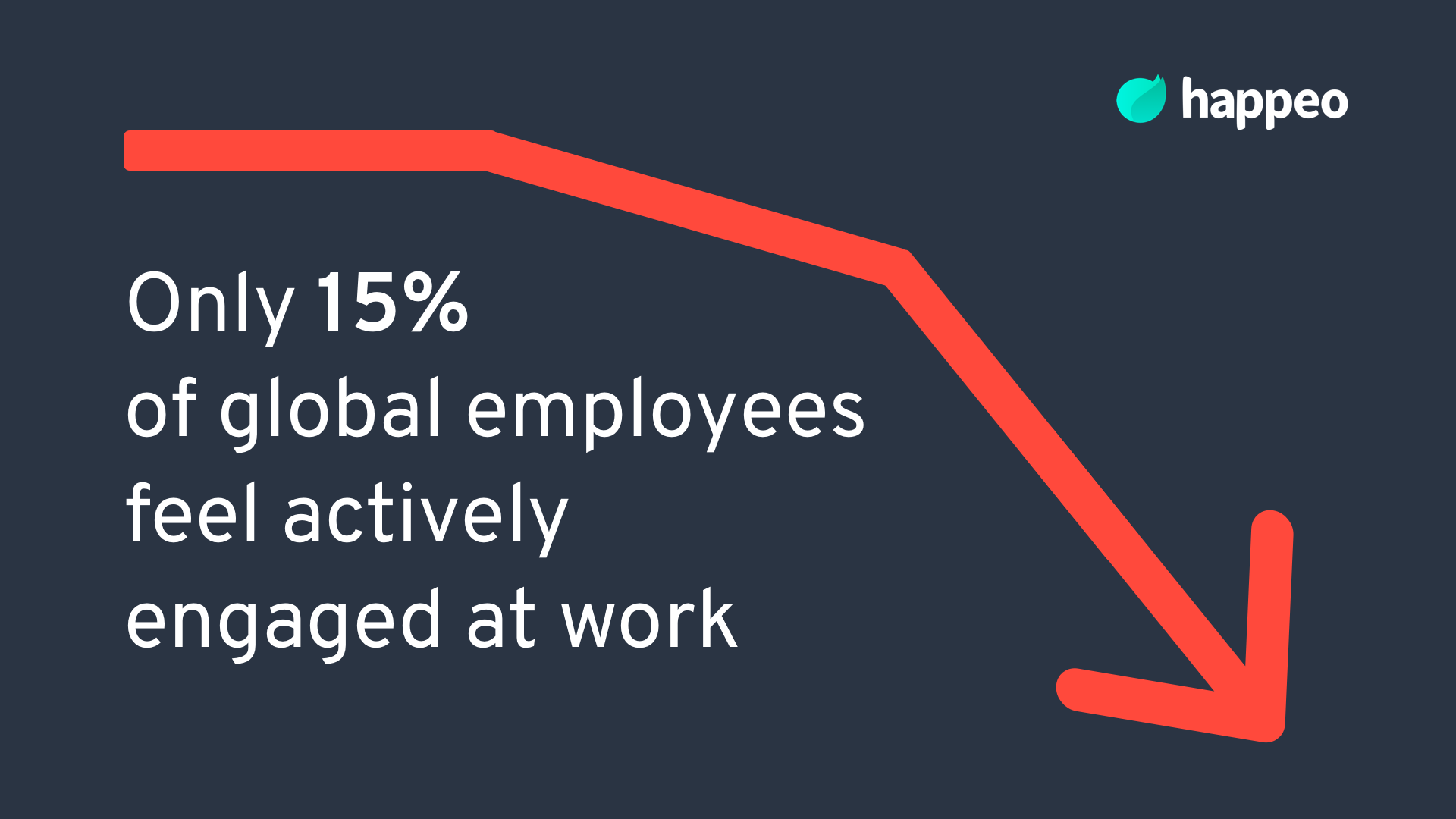Guide to Google Workspace (formerly G Suite) and recommended Google-based intranets
Google Workspace has revolutionized the world of employee collaboration, and your grandma’s intranet won’t cut it anymore. Today’s best intranet solutions are cloud-hosted, dynamic, and suited to the needs of the modern workplace — which means tight integration with Google Workspace tools.
How can Employees collaborate and stay informed with Google Workspace?
33 min read

See how an intranet works
Learn how an intranet works with this short video.

Introduction
Do you remember when your company intranet was just a place for static news updates and stilted top-down communications? Improvements to technology over the past decade — and seismic changes to the workplace brought about by the pandemic — mean that the humble intranet of old is no more. Modern intranet solutions have transformed the way employees communicate, collaborate, and get their jobs done.
At the same time, the rise of the Google Workspace has given employees the tools they need to effectively collaborate — even from a distance. The Google Workspace (then G Suite) surpassed 6 million paying businesses back in early 2020 — and for good reason. This set of simple tools has had a huge impact on employee productivity and efficiency while catering to the needs of an increasingly Millenial and Gen Z workforce. These younger workers are often used to using Google’s tools thanks to the Google for Education product suite, which Google has cleverly decided to offer to educational institutions for free.
So, how do these two toolsets — Google Workspace and the employee intranet — come together? In this article, we’ll discuss the rise of the “Google intranet”: intranet platforms that work seamlessly with Google Workspace, allowing you to access the tools you need, all from one intuitive and user-friendly intranet platform.
Want to improve collaboration?
Watch our video
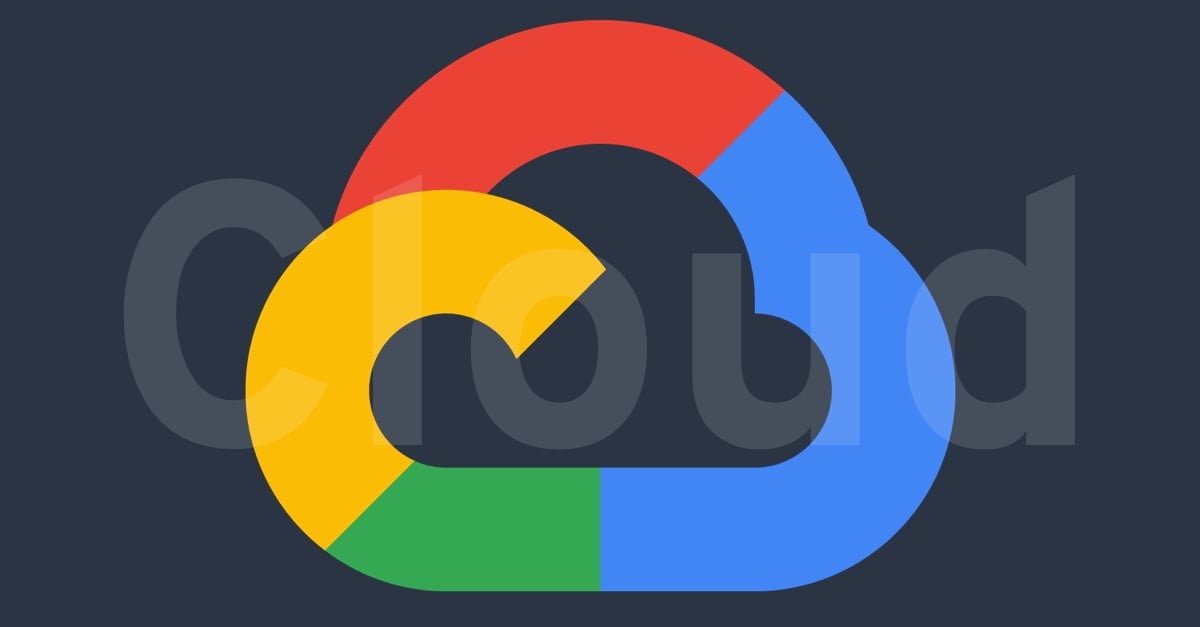
The rise of the digital workplace
The COVID-19 pandemic shifted a huge proportion of the world’s workforce to remote work overnight — but many organizations were already moving in this direction. Companies have been increasing their reliance on cloud-based tools for at least a decade. In fact, Forbes predicted back in 2018 that 83% of enterprise workloads would be in the cloud by 2020. And COVID has certainly accelerated things: a McKinsey report from April 2021 found that 52% of employees would prefer a more flexible work model once the pandemic is over, increasing the need for cloud-based collaboration tools.
As a result of these changes to the workplace, the last few years have seen a huge boom in SaaS-based products designed to streamline remote collaboration. In 2021, organizations across the world had an average of 110 SaaS applications in their tech stack — a number that has consistently increased since 2015.
What is cloud computing?
Remember the old server rooms? Those hidden doors, usually in the basement or some dark corner of the office, from which weird flashing lights and whirring noises emanated. It used to be that a workplace’s digital storage and intranet were housed on-site, in those server rooms. The stacks of drives powered the entire office’s systems, letting you get online to access shared folders and get the company news from a clunky old intranet.
- The 1990s intranet was a central corporate portal for accessing practical tools.
- The 2000s intranet was the all-encompassing beast of news, process, forms, policy, and procedure.
- The 2010s intranet is the socially-enabled digital workplace.
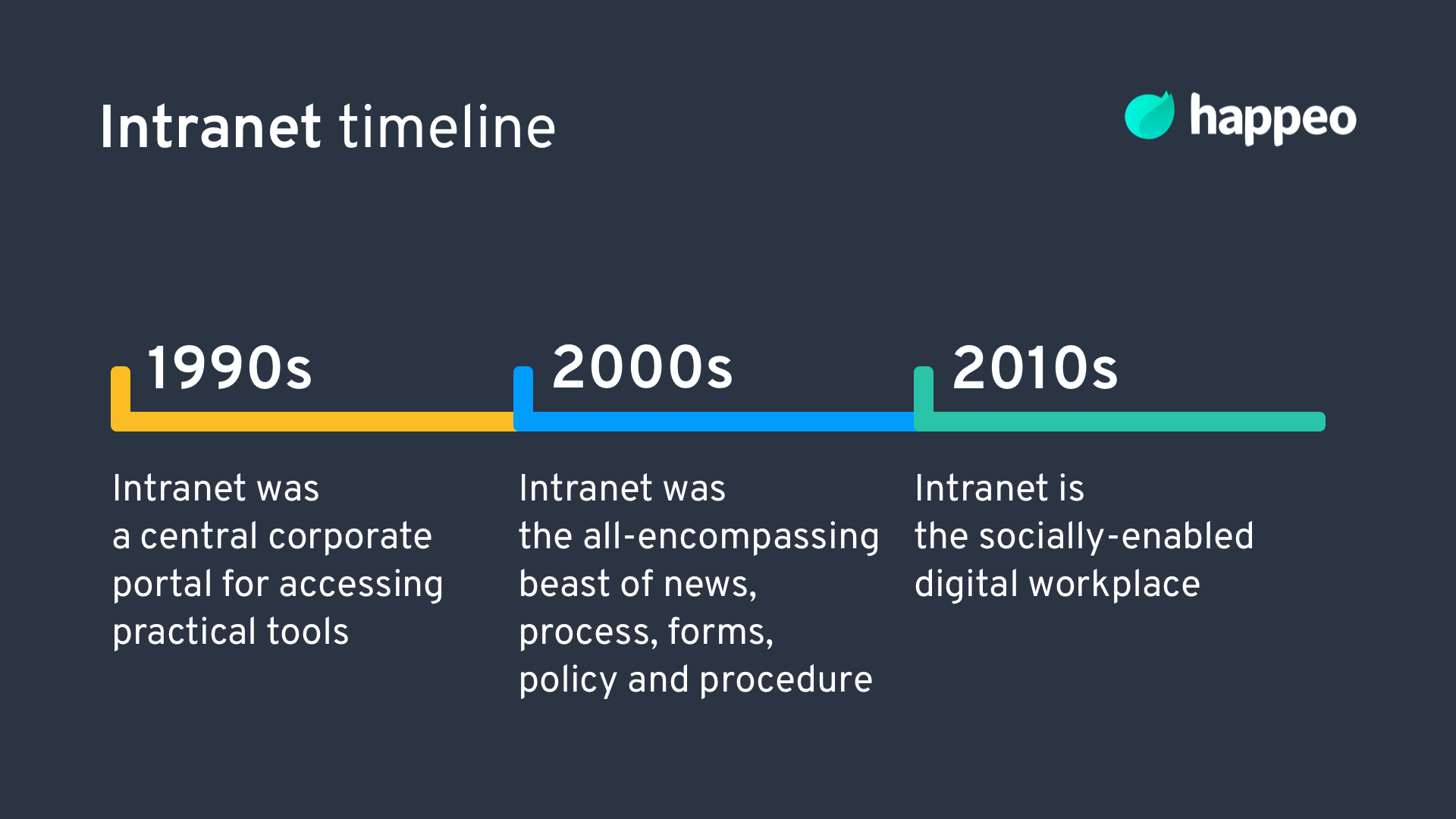
Many traditional Heads of IT still like these on-premises rooms filled with computer equipment because they think they are more secure, less prone to attack, than their counterparts outside the door (or in the cloud). And when it comes to your intranet, the tools you deploy for your employees to collaborate and stay informed, security is important. That system houses:
- your confidential information,
- employee data,
- intellectual property,
- financial details, and
- business strategy
Securing an on-premises intranet is something IT bods feel comfortable with. They know how to invest in firewalls, anti-virus, privacy controls. They know how to spot hacking attempts and fraud actors. They know the on-premises system lets them oversee testing and rollout of upgrades. They know they are in control of how it all goes down.
Want to improve your company's productivity?
Get an intranet
Cloud vs. Server
But on-premises intranets are expensive – and the cost is mainly up-front. Even if you get the budget to invest in, say, the most recent Microsoft Office suite including SharePoint and Microsoft Teams, you’ll likely be relying on that same technology for the next decade; there are no automatic updates.
It also takes a long time to roll-out a new on-premises custom intranet, and you’ll need someone to own it and build out your intranet site, staying on hand for additions, new pages, and improvements. That bumps up the cost significantly – both in terms of technical and human resources – which is why many businesses today are moving to cloud storage, collaboration and communication tools.
According to studies conducted this year, 93 percent of enterprises have a multi-cloud strategy; 87 percent have a hybrid cloud strategy.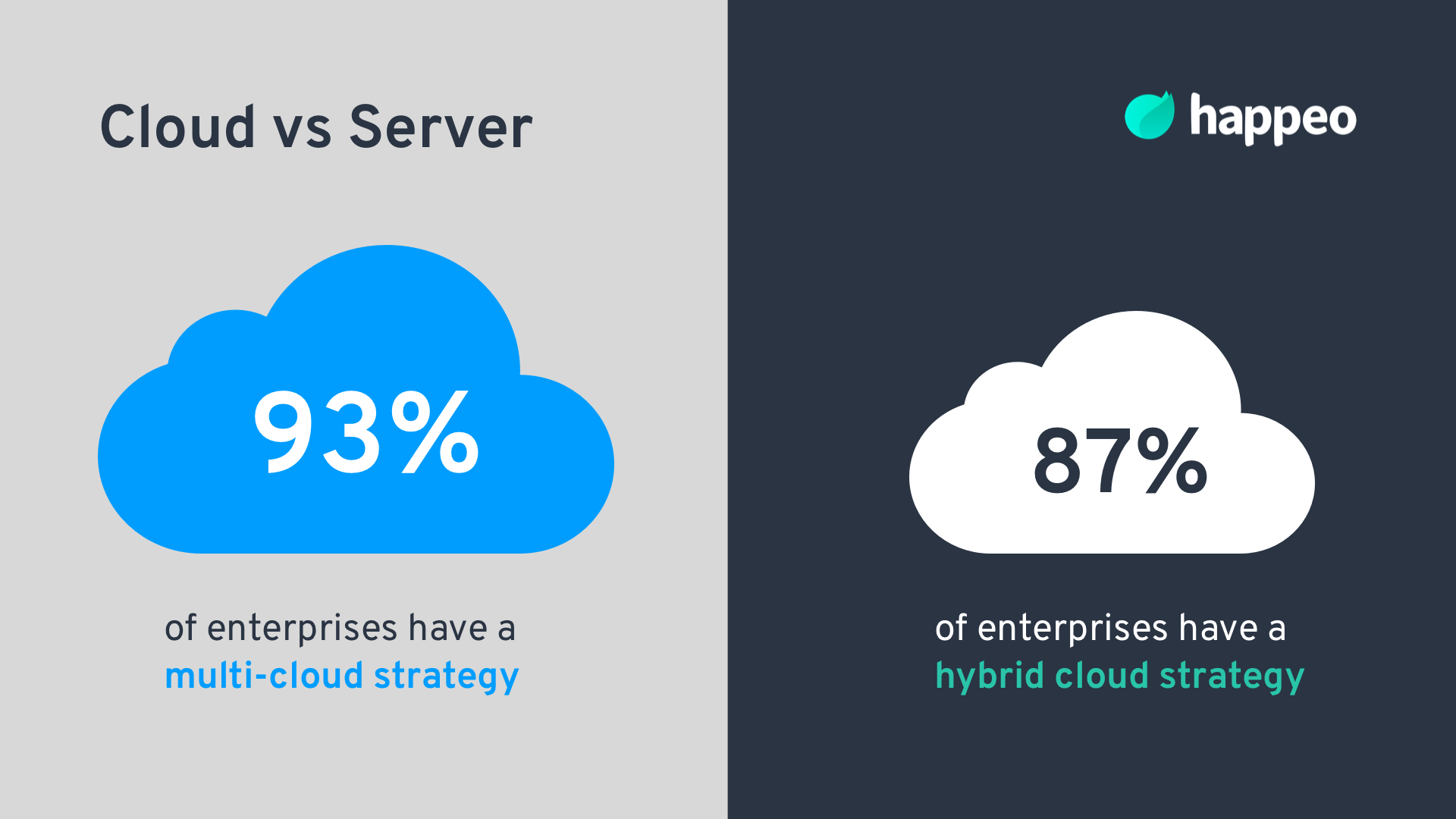
Reliability and cost-effectiveness are seeing businesses migrate their applications and data to cloud-based intranet at an increasing rate. The cloud’s potential to improve productivity is clear, especially with services like Google Apps for Work, the G Suite for business, and other SaaS business tools designed specifically with easier collaboration and communication in mind. And unlike their on-premises counterparts, cloud-based tools have lower set-up costs with quicker deployment.
Working with cloud-based intranet or using the G Suite for business for things like document sharing, communication and collaboration enables remote working and improves connectivity – anyone can access what they need to do their work, wherever they happen to be in the world, which means no more frantic emails or calls back to HQ asking if someone could just email you over the following documents from the shared drive because you forgot to download them before you left the office…
Office 365 vs. G Suite
Office 365
- More than 200,000 organizations use Microsoft Teams in 181 markets across the world.
- Microsoft has more than 135 million monthly paid commercial users of Office 365
- Internal Communicators object against the “Office 365 effect” - the process of the suite cloud taking over businesses
- In 2018 there was a correlation between the usage of Office 365 and other digital practices, with 56% of the users planning on improving digital channels
- Access to files and collaboration can’t happen without Internet access
Google Workspace (G Suite)
- Younger users find the Google interface more intuitive and easier to use than the Microsoft system.
- Many students are familiar with Google’s education suite, making it that much easier to integrate a workforce using G Suite.
- The number of organizations paying for G Suite for business had doubled to more than 4 million, most of which are small and medium-sized companies, according to Alphabet’s 2018 earnings announcement.
- Examples for G Suite users are Verizon, Nielsen, Airbus, Carrefour, Whirlpool, and Colgate-Palmolive.
- According to Reuters, users like the low prices and collaborative features such as the ability for multiple users to edit a single document simultaneously.
- G Suite functions offline - the changes made offline sync when there is an Internet connection
Advantages of cloud computing
One of the real benefits to businesses using the cloud, though, and tools like a G Suite intranet, comes from the ability to integrate. Those old on-premises systems were the very definition of “silo”; to get systems to talk to each other often involved a developer scratching their head and writing reams of code just so you could move between tools. Cloud integration revolutionized the way businesses can get multiple systems to talk to each other. By implementing Cloud integration you are able to:
- Have the benefit of a solution that is always-on,
- Reduce your operational issues,
- Spend less up-front capital
- Encourage and increase collaboration between employees because it was made for collaboration and file-sharing, and
- Have your team be anywhere in the world and still work together
In short, cloud integration joins the dots and breaks down the silo walls. It became crucial to optimising business processes with the growth of SaaS solutions; by integrating systems, you improve connectivity and visibility. Importantly, though, integrating systems and processes in the cloud leads to better internal communication and collaboration.
- You can integrate your accounting
- Your workflow productivity tracker,
- Your conferencing and webinar systems,
- Your marketing email tool,
- Your social intranet or digital workspace
If you have a business need, there’s likely some integration you can use in the G Suite marketplace.
Recommended methods for communicating across generations
In this day and age, the vast majority of the workforce is able to use technology, if not comfortable with it, so is all of this talk about generational preferences actually a red herring? Internal Communications guru Helen Deverell, of Helen Deverell Communications, has a thing or two to say on the topic.
“There’s been a lot of discussion in recent years about Millennials and Gen Z and the impact they will have on the workplace, particularly in relation to digital. Yes, they have grown up as digital natives, but technology has disrupted the world we live in, and most people, whichever demographic they’re in, interact with technology every day,” Deverell says.
“I frequently conduct internal communication audits and the reasons people don’t use social collaboration tools or digital workspaces at work is often because they don’t have time, the content isn’t relevant, or no one has explained the purpose of the tool. Very rarely is it because they’re uncomfortable using technology.”
Deverell suggests segmenting your internal audiences by generation is “too simplistic” – that communications decisions are more likely influenced by factors such as job role, department, whether employees are desk-based or remote, the information they’ll need to perform their work, and so on.
“Studies have shown that Millennials are an extremely hard-working generation and expect certain things from the workplace such as purpose, quick career progression, and flexibility. However, these are all undoubtedly things that many employees of all ages would like to see in their organizations,” she says.
Must-have intranet features
Download feature list
“I think there are other ways we can segment our audiences that will be far more impactful. However, if you are introducing digital communication tools, I would always advise that you provide training, appoint champions who are enthusiastic about technology (and that doesn’t necessarily mean just Millennials and Gen Z) and provide ongoing support.”
“If implemented in the right way, social collaboration tools can be a great addition to the internal communication channel suite. But the challenge many internal comms teams face is keeping employees interested after the initial launch.”
“And, of course, there are some organizations where digital isn’t the right way to go, whether because there’s an older workforce or the ways of working and culture don’t warrant it. Never assume that because the world is going digital that your organization must introduce more digital communication channels. Do your research to understand your organization and how your employees prefer to receive communication before investing in a tool that might not be suitable.”
What is Google Workspace (formerly G Suite)?
If you’ve ever edited a Google Doc, used Gmail, or chatted with a colleague on Google Meet, you’re already familiar with at least some of the tools offered as part of Google Workspace. This product suite has gone through numerous iterations throughout its existence, starting life in 2006 under the name Google Apps, and becoming G Suite in 2016.
In October 2020, Google announced another rebrand — and Google Workspace was born. This rebrand came with an emphasis on interconnectivity between the various apps included. For example, you can now start a Google Meet call directly from Google Docs, Slides, or Sheets, and create Docs from within a Chat. Through these innovations, Google Workspace allows for more efficient and productive collaboration, acting as a true digital alternative to a physical office.
The products included in Google Workspace include:
- Gmail: The ubiquitous email service almost everyone has used
- Google Docs, Sheets & Slides: A word processor, spreadsheet application, and presentation software
- Google Drive: A file storage and synchronization service
- Google Calendar: An online calendar that integrates with Gmail
- Google Forms: A survey application with collaborative and sharing features
- Google Sites: A website creation tool that allows multiple users to create and edit sites
- Google Meet: An online video conferencing software for meeting with colleagues
Learn about Google Apps
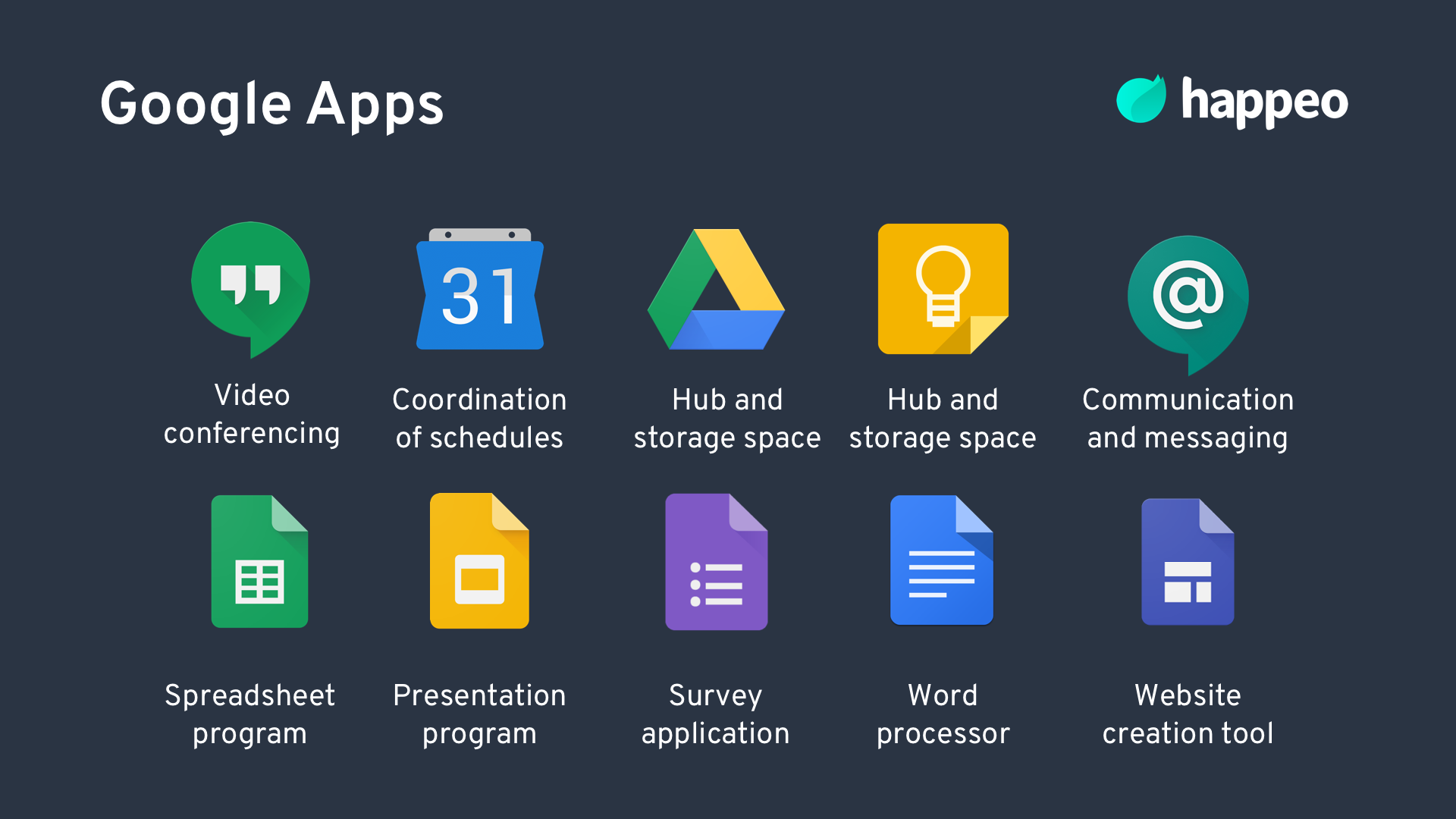
Google Workspace is where you’ll meet the ubiquitous Gmail, but there are also other tools to help improve your productivity such as:
- Google Meet - a video conferencing app
- Google Chat - a communication and messaging tool that allows direct messages and group chat rooms
- Google Calendar - an online calendar for creation of public calendars, coordination of schedules with coworkers, and accessing room/other shared resource availability Google
- Drive - a file storage and synchronization hub and storage space.
-png-1.png)
- Google Docs - a word processor and collaborative tool where changes are saved automatically and saved in your Google Drive
- Google Sheet - a spreadsheet program that is also collaborative and saved automatically in your Drive
- Google Slides - a presentation program with the same collaborative and storing benefits as Docs and Sheets
- Google Forms - a survey application with collaborative and sharing features as well as Google Sites - a creation tool where anyone on your team can create and edit websites without IT or coding skills
- Google Keep - a note-taking service with tools for text, lists, voice, and images
Consumers can get access to these for free, but the lure for businesses is the ability to get a custom domain and additional administrative tools and advanced settings through the Admin panel and Vault, plus the digital interactive whiteboard Jamboard and the app development App Maker available on some plans.
Who should use G Suite?
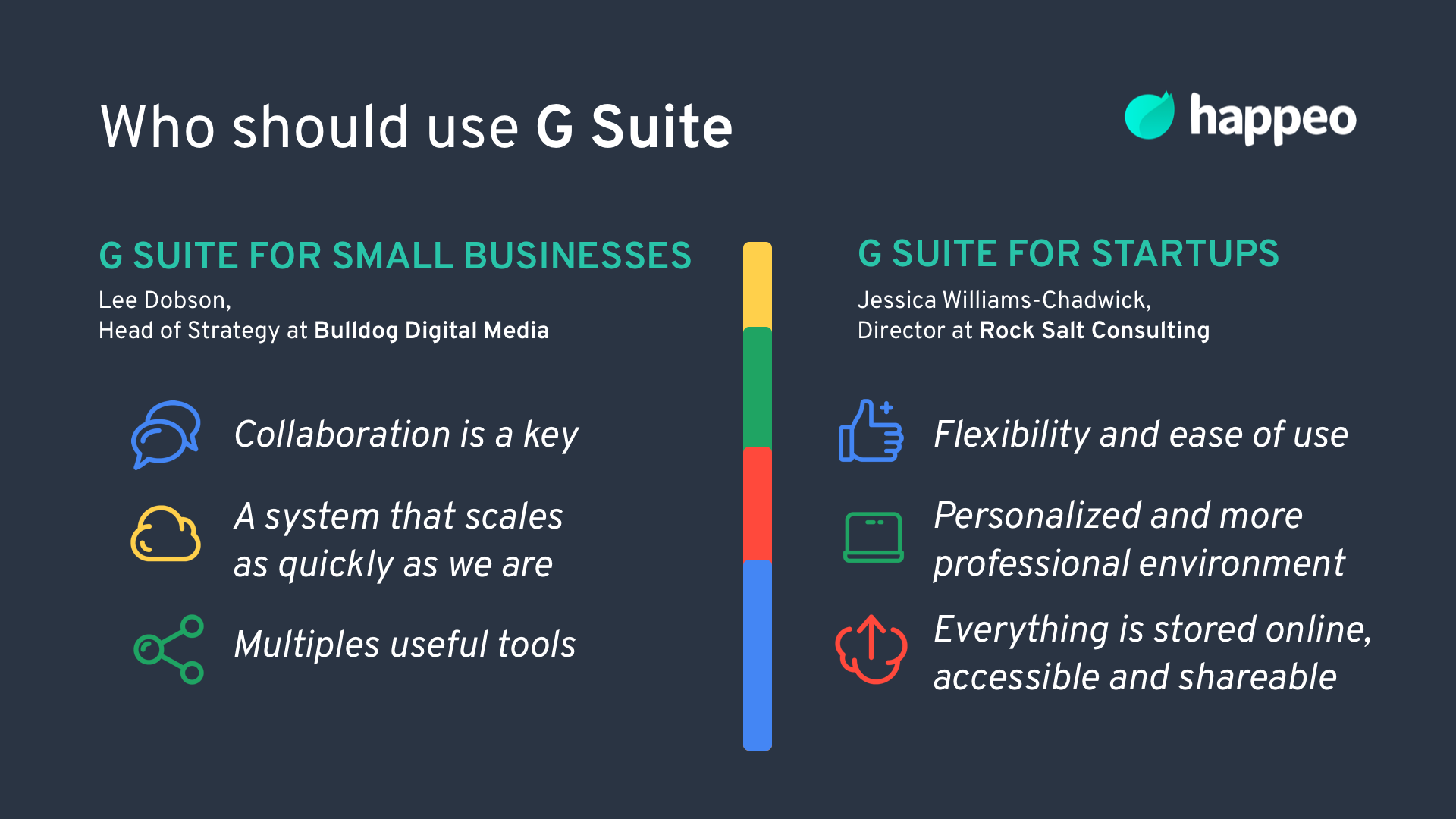
G Suite for small businesses
“Google’s ecosystem of apps and collaboration tools was a big deciding factor for us when choosing how to work,” says Lee Dobson Head of Strategy at Bulldog Digital Media. “Google Workspace was a no brainer for us as a business, especially as we were growing so fast we needed a system that scales as quickly as we are. The G Suite for business does that, and then some!”
With team members spread across three cities, collaboration was a key for Bulldog's operational decisions: “As an agency, we tend to do a lot of collaborative work and are usually sharing documents around departments, so being able to work together on documents, even if we aren’t in the same office, means we can work effectively and efficiently.”
Bulldog’s various teams use different tools in the Google Workspace, but the main common ones are Google Drive, Gmail, Google Docs, Google Sheets, and Google Calendar.
“The collaboration and email tools make day-to-day tasks easier,” Dobson says. “G Suite for business also hooks into some of our other tools, such as Hubspot, which speeds up tasks even more.”
G Suite for startups
It was a similar case for Rock Salt Consulting, a London-based startup helping other startups to grow. “We started off with Microsoft Office,” says Director Jessica Williams-Chadwick, “but the freelance community I am part of uses Google Workspace, and I was impressed by its flexibility, smart working and ease of use.
“It was easy to switch over. We could get personalized email addresses that looks more professional, and I prefer the 'feel' of the G Suite. However, I am from a startup background and not a corporate one, so I didn't have to get used to a different system as I was already using several Google applications in my personal life.”
For Rock Salt Consulting, it had to be a cloud-based intranet and collaboration, so Google collaboration tools were the obvious choice.
“A cloud-based intranet was extremely important for us as our whole business is mobile and flexible. This means we work from different places, home, cafes, a co-working space, and share computers often, sometimes switching mid-session, so everything is stored online, accessible and shareable is key to the success of our business. We use Google Docs all the time for collaboration, both internal and external, as it's much clearer than an email trail, and the calendar integration is useful too.
“As with many things and different operating systems, the functionality has become more or less a level playing field, and it has become more about the overall UX or even what people are comfortable with. As a startup, we found Google Workspace for business-suited us perfectly: the way we work and collaborate with clients fits with the tool, and the flexibility of the Google apps for work mean that as working parents we can maintain a good work-life balance across different applications.”
But it’s not just startups and agencies; UK supermarket chain Morrisons, fashion brand GANT, the Canada Games Council, FMCG brand Colgate-Palmolive, and insurance company Generali Hungary show the depth and breadth of companies making the most of the productivity and collaboration offered by the G Suite for business.
Want to boost collaboration, engagement, and productivity?
Get an intranet
The advantages of G Suite
There are many advantages for using Google Workspace as a business and many tips how to use it to improve productivity. One of the big advantages of the G Suite for business is you can use your Google login across all tools and apps. This alone saves time and increases productivity as it eliminates the need to log in to multiple systems – and come to mention it, it increases security as there’s no spreadsheet or post-it note full of login details hanging around.
Plus it’s super easy to switch between your Gmail accounts, whether you’re on a desktop or a mobile – just tap on your icon and choose the account you want to be viewing. It’s UX like this that has younger users flocking to Google collaboration tools.
Single sign-on and Google logins are second nature to Millennials and Generation Z. They’ve grown up in and become used to a world that doesn’t work in silos, where they can switch between websites quickly without needing to login each time, and any company that tries to force them down that silo route is a company that takes its future into its own hands. .png?width=1920&name=6%20(1).png)
What impact has Google Workspace (G-Suite) had on modern businesses?
In 2019, Google commissioned the research company Forrester to conduct a Total Economic Impact (TEI) analysis of Google Workspace, examining the value that the product brings to organizations. Forrester interviewed eight enterprise Google Workspace customers who had been using the product for years. They then used the data gathered to develop a composite organization that was representative of the companies they interviewed: an enterprise with 20,000 employees, an annual revenue of $3 billion, and 3% year-on-year growth.
The idea was to assess the total financial impact that using Google Workspace could have on an organization — and the results were impressive. Here are some of the key benefits that the study found:
- Increased employee efficiency and productivity totaling $22.1 million
- IT productivity and efficiency gains totaling $1.6 million
- Security savings totaling $7.6 million
- 331% ROI over three years, risk-adjusted
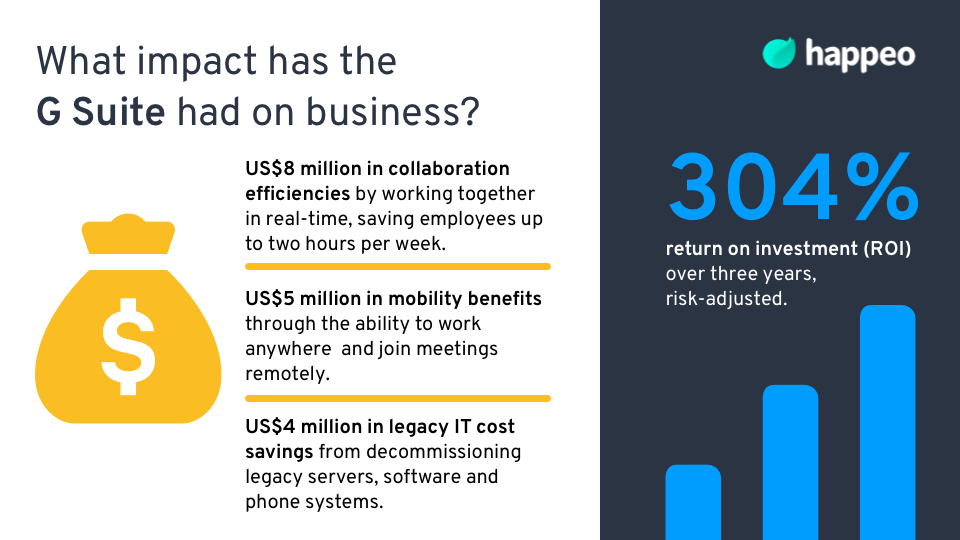
The analysis also outlined some less quantifiable benefits that the composite organization achieved, including:
- The ability to attract and retain top talent
- Reduced recruiting and onboarding costs
- Reduced costs associated with mergers and acquisitions
What is an intranet?
A company intranet is a private portal that employees can access to collaborate, communicate, find information, and even connect on a social level. Modern intranets are powerful tools, which can improve employee experience and boost productivity and engagement — when they’re used right.
At Happeo, we like to break down the employee intranet experience into four key factors: collaboration, communication, community, and information.
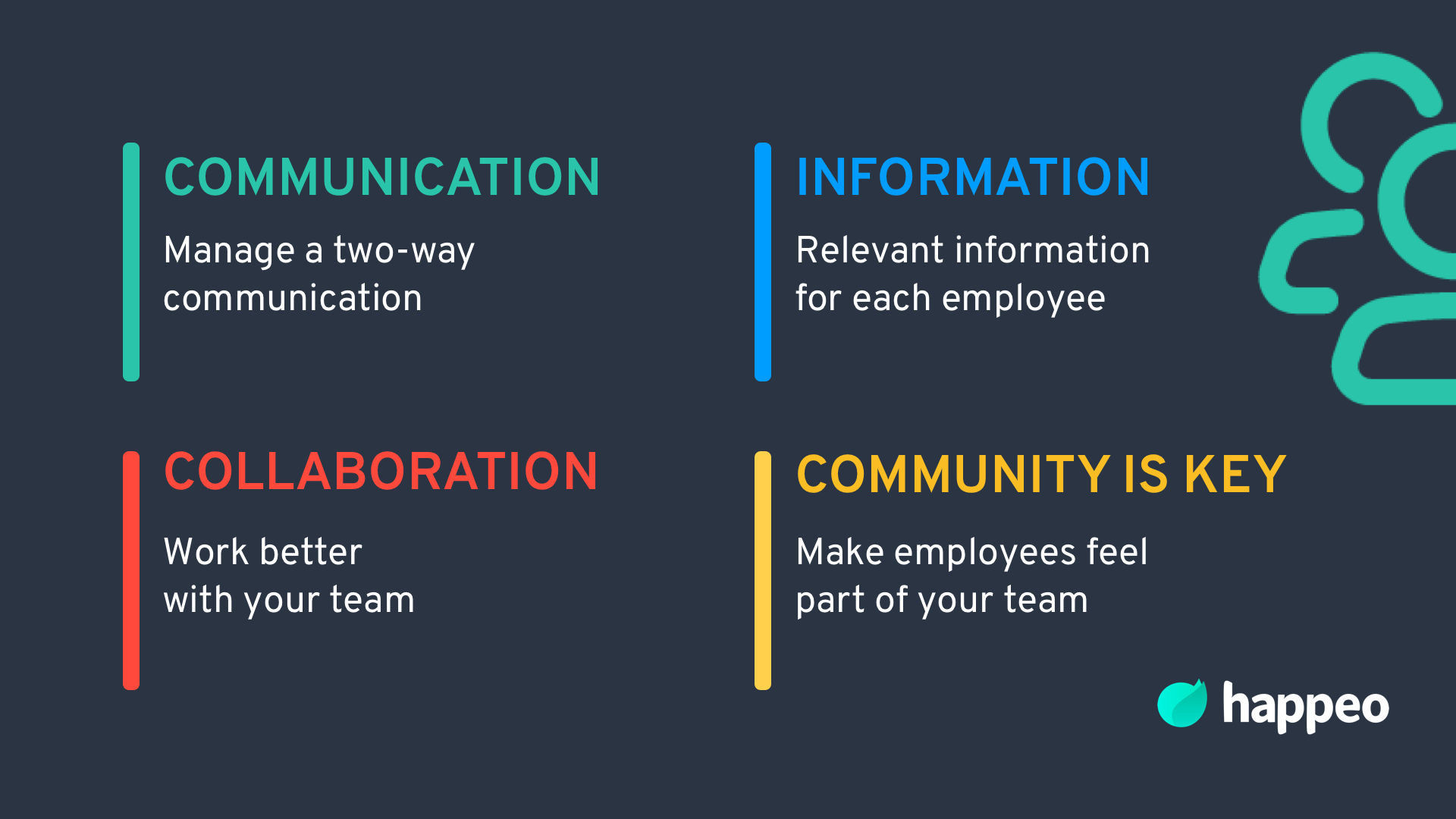
And the best intranets integrate seamlessly with the tools that organizations are already using — like Google Workspace.
To be clear, Google does not offer its own intranet functionality. When we talk about a “Google intranet”, we’re talking about a third-party intranet solution that works side-by-side with Google’s suite of tools. Using a Google intranet can help you to increase intranet adoption since your team will already be familiar with the core tools they’ll be using. It can also help to increase productivity and make your employees’ lives easier since they’ll be able to access everything they need in one easy location.
How do businesses benefit from Google intranet solutions?
As we’ve seen, Google Workspace can have big results for businesses. And at Happeo, we’re big believers in the power of a modern, fully-featured employee intranet. So it makes sense that when you pair the two together with a powerful Google intranet solution, your organization could see some major benefits. Here are some of the reasons you should consider using a Google Workspace intranet solution for your business:
A Google intranet improves employee communication and engagement
Just 15% of global employees report feeling actively engaged at work. So how does an intranet improve employee engagement? Better communication is key. An intranet is crucial to connecting employees together, wherever they are. Functionalities like the ability to publish news to the whole organization help everyone to feel connected — and engaged — with their employer.
And this is even more visible with a Google intranet, because these platforms include all the tools employees need to effectively communicate with each other. No more sending emails out into the void and hoping for a response: with a Google intranet, you can send an instant message with just a few strokes of the keyboard, check your colleagues’ calendar availability in real time, and even hop on a video call, directly from your intranet portal.
A Google intranet increases employee productivity
Productivity doesn’t just mean getting more done — it also means optimizing the way tasks are completed. After all, any company can demand more of its workers, but unless it improves operational efficiency, that “more” is likely to mean long hours and employees who are increasingly tired and frustrated.
A well-planned intranet, on the other hand, can help connect workers to the right colleague to solve a problem, the right document for a particular job, and the right training module to help them upskill. Employees will be able to get their work done more efficiently, leading to greater productivity and a happier workforce. Of course, decent search functionality and a cohesive content management strategy are key here, as is ensuring all documentation and articles have strong metadata to feed that search.
And a Google intranet has even more potential to improve your employees’ productivity. Think about it: how much time do you and your colleagues spend searching through email chains for the right version of a document, sending drafts back and forth, and sitting through meetings to nail down the latest changes? With an intranet that’s connected to Google Workspace, colleagues can collaborate on Docs, Sheets, and Slides in real time, without creating duplicate versions or losing the latest changes.
G-Suite intranets can be accessed with a Single Sign-On
One of the biggest advantages of using Google’s products is that they’re all connected. When you have a Google intranet, your employees don’t need to worry about remembering endless passwords and accessing multiple accounts. Instead, they can log on to their intranet, email, calendar, file storage system, and more in seconds — with a single password.
Google intranets can provide unlimited storage
Fifty years ago, the average company had walls of filing cabinets and cupboards overflowing with files and folders, containing the important information the business needed to function. These days, most of that data is stored in the cloud. But, while it’s not physically taking up space in your office, you still need to think about where you’ll put all of that info.
Thankfully, that’s not something you need to worry about with a Google intranet. For starters, even the basic Google Workspace package comes with 30GB of cloud storage per user — which should be enough to get you started. And when you move up to the more advanced plans, the storage you get increases too — up to unlimited storage with the enterprise package.
Questions about intranets?
Talk to an expert
Google intranets integrate with apps employees already use
At this point, most of us have used at least one Google app. This means that your employees will be able to start working more efficiently together, increasing their productivity, and even communicating with each other, without having to master a whole new suite of tools.
And the fact that most people are already familiar with Google tools can help you to get them on board with your new intranet solution too: we’ve found that Google Workspace integration can increase intranet adoption by at least 43%. After all, there’s no point in investing in a software solution that no one will use.
Which intranet to choose?
Download comparison guide
Google intranets are intuitive and easy to use
When an organization introduces a new piece of software, it usually means more work for at least one employee. And even those who aren’t directly involved in deploying and maintaining the new software will have to learn how it works and make an effort to incorporate it into their daily workflows.
With a Google intranet, though, everything is intuitive and easy to use. Anyone who can edit a Word document can also edit a Google Doc, for example. And a good Google intranet will come with a clean, simple interface that employees can quickly get used to with little to no training — so they can focus on doing their best work.
Google intranet software improves knowledge management
Businesses run on knowledge — and a good knowledge management strategy can be the difference between a smooth and efficient operation, and total information chaos. In fact, a McKinsey study found that companies that have a centralized record of internal knowledge can cut down on wasted time by as much as 35%.
A Google intranet makes it easier than ever to capture, store, and distribute the information your employees need to do their jobs. It also makes it easier for employees to find the information they need, without having to waste time chasing down colleagues or hunting through their inboxes for the latest copy of a document.
A Google intranet can be customized to align with your brand
A good Google intranet solution will allow you to customize your intranet so that it matches your branding, vision, and values. By ensuring that everything within your intranet aligns with your brand messaging, you can create an online space where your employees will feel at home straight away. This can lower the barrier to entry, even resulting in increased intranet adoption.

Google intranet solutions provide analytics and insights
With a Google intranet, you can embed Google files like Docs, Sheets, and Slides directly into your intranet pages, making it even easier for your employees to access them. However, this isn’t much use if you can’t tell what content people are reading.
A good Google intranet solution will come with built-in analytics features that allow managers to get a birds’ eye view of the content that’s resonating with people, and zoom in to focus on the details. Some solutions (like Happeo, for example), also come with search analytics, so you can find out what information your employees are searching for that doesn't yet exist — and answer their questions before they have to ask.
Google intranet examples
Curious about how a Google intranet could help your organization? Below are a few examples of Happeo clients who are seeing great results through Happeo and its Google Workspace integration.
What is Google Sites
You’ll have noticed we’ve mentioned “Sites” a few times now – and let’s face it, you’re reading this article because you’re looking for an intranet that you can add to your Google Workspace account, so that must sound like your prayers are answered. As an cloud-based intranet, Google Sites touts itself as a way to “effortlessly create impactful team sites” that “look great on all screens”, “all without learning design or programming”. With a sales pitch like that, it’s no wonder users flock to it as their intranet.
Happeo and Riwal: connecting offices together
Riwal is a construction equipment company with 2600 employees across 75 offices in 16 countries. Before using Happeo, the company was already using Google Workspace but knew they needed to improve the way they communicated internally.
Riwal implemented Happeo as a central, scalable location where employees could come together, enabling collaboration and bottom-up communication. They have seen great success in motivating difficult-to-reach employees, like drivers, to join the platform, thanks to Happeo’s mobile app.
And a key feature for Riwal has been Happeo’s Google Workspace integration, which has empowered the commercial side of the business to effectively collaborate.
“The new normal means that working from home is here to stay for our office employees. Happeo will continue to play an important role in team bonding and sharing of knowledge and success stories – both globally and locally.”
— Kris Desmedt, Group Manager Marketing and Communication at Riwa
Happeo and Hunt Club: Creating a user-friendly digital HQ in just two weeks
Hunt Club is a tech-enabled recruitment company that leverages relationships and referrals to place the best talent with the right companies. They needed an intranet solution that would allow them to quickly onboard their rapidly growing team, and share and store vital recruitment insights.
Hunt Club launched its Happeo solution in an impressive two weeks. They say they’ve seen high user adoption, largely because of Happeo’s intuitive and user-friendly platform.
Since launching Happeo, Hunt Club use the platform as their company homepage, with the expectation that everyone starts their day there. Happeo’s Google Workspace integration is a crucial part of this, as it means that everyone has everything they need to start their day, from email to calendars, as soon as they turn on their computers in the morning.
“Hunt Club is really excited to be partnered with Happeo because we both consider ourselves disruptors. We're both tech-first companies, we’re leading our individual categories, and it's been a great partnership with a lot of synergies in terms of what we're trying to do to disrupt the recruiting space and what Happeo is trying to do to disrupt the intranet space.”
— Caitlyn Ibrahim, Senior Manager of Research and Strategic Capabilities
Happeo for Google Workspace
Happeo is your combined employee intranet, knowledge management system, and social network, all in one user-focused environment. And, thanks to Happeo’s rich integrations with Google Workspace tools, employees can log into Happeo at the start of the day and stay there until their work is done.
For starters, you can automatically sync users from Google Groups to control access to Happeo Pages and Channels. You can create a fully searchable employee directory and org chart from your Google Workspace user data in just a few clicks.
Then, you can insert Google files like Docs, Slides, and Sheets directly into your Happeo Pages and Channels — and edit them from right within the platform. Everything will be securely stored in your Google Drive, which means you’ll have no annoying uploading, downloading, and duplicate versions to deal with.
Plus, you can use Happeo to check a colleague’s availability on their Google Calendar, send them an IM, and even hop on a video call through Google Meet — all without leaving the platform.
And there’s no more time wasted on searching for information either: Happeo’s Universal Search function means that users can search across Happeo Channels and Pages, Google Drive, shared Drives, emails, and more — all at the same time.
Book a free, personalized demo to find out how Happeo could transform your business.
What to consider when looking for a Google intranet
Google’s software suite was designed around helping businesses to achieve success in four key areas. According to Google itself, Google Workspace can help organizations to:
- Connect their employees together (wherever they are)
- Create beautiful, collaborative documents and projects
- Access the files and info they need, instantly and from anywhere
- Control exactly who has access to which documents, files, and data
Let’s take a look at those four areas in a bit more detail.
Connect your workforce

Outside of its search engine, Gmail is probably Google’s most popular and widely used tool. And, while it started life as a personal email service, many organizations are now using Gmail as their secure, private, and ad-free email system.
IT admins can centrally manage accounts, and data is stored safely in the Google web environment. You’ll also get a personal @yourcompany domain name for your emails. And when we compare Gmail with its biggest workplace competitor, Microsoft Outlook, we see some interesting results: Gmail is 42% faster at sending and receiving attachments, and 85% faster at saving attachments to the cloud.
And Gmail is not the only communication tool that comes with Google Workspace. Google Chat is an IM tool that you can use from within Gmail, through a standalone app, or — yes — directly through your Google intranet.
Google Workspace also includes another tool that’s vital in today’s world of work: Meet. If you’ve never used it before, it’s a videoconferencing software solution, similar to tools like Zoom, Skype, and Microsoft Teams. Where Google Meet wins over these other tools is that it’s totally smooth and easy to use. Think about it: how much time have you spent getting frustrated that the Zoom link won’t work or that Teams is taking forever to load? One study even suggests that you can join and leave a video call 68% faster in Meet than on Skype.

One of the great things about Google Workspace is how interconnected everything is: you can launch a meeting from inside a Doc, Sheet, or Slide, or schedule one in your calendar and send out invites in just a few clicks.
Create documents and run projects transparently
Google Workspace comes with a number of different tools and platforms that allow teams to create, edit, and collaborate on files, work efficiently together and generally foster a productive and happy work environment. Here are some of the tools included:
- Docs: Google’s pimped-up answer to Microsoft Word, which lets you collaborate with colleagues on documents in real time, and share docs in just a click, even outside your network.
- Sheets: A cloud-based, collaborative spreadsheet app with AI capabilities to help you tap into the right insights and make smart business decisions. Like Docs, Sheets lets you seamlessly collaborate with colleagues and see changes as they’re made.
- Slides: An online presentation builder complete with sleek templates and features like charts, diagrams, and animations.
- Forms: A very simple tool that makes creating surveys and questionnaires as easy as creating a document. You can then send your form out to anyone as a link, gather the data collected in a spreadsheet, and analyze everything in Sheets.
- Keep: A note-taking app that allows you to create, store, and organize notes whenever inspiration strikes. They’re automatically synced across devices, so you can create a note wherever you are — and you can use Keep to collaborate with colleagues on notes, lists, drawings, and brainstorms too.
- Google Sites: A website-building tool for dummies (no offense). Google Sites lets you create professional-looking internal sites for your team, department, or project — with no coding or design skills needed.
- Jamboard: Jamboard is a virtual collaborative whiteboard with real-time co-authoring — a really useful tool for those who need to see things visually to understand them. You can use the app on your mobile or browser, or even buy a physical board for your meeting room.
- Apps Script: Apps script is a platform that allows you to build business solutions to extend and even improve Google Workspace. While it’s described by Google as a “low-code” platform, your teams will need some coding knowledge to use it — but it's a useful tool if you have a strong IT team.
Let’s face it: if you want to create documents, presentations, and spreadsheets in a business context, you really have two choices: Google Workspace, or Office 365. And while both product suites will certainly do the job for you, Google’s products do have an edge in some areas. For example, a study by Principled Technologies found that you can open shared documents, preview calendar invites, and upload attachments much faster in Google Workspace than in Office 365.
Access anything from anywhere
When you store important files on your local desktop, you risk losing them if something goes wrong with your computer. And if you’re still emailing multiple versions of each document back and forth with colleagues, you’ll know how frustrating that can be.
Cloud computing — and solutions like Google Workspace — mean you don’t have to do this any more. Using Google Drive to store your documents means they’re safely stored in the cloud, and not at risk of disappearing if someone drops their laptop in the bath (it happens). And when you collaborate on Docs, Sheets, or Slides, they’re edited in real time, without creating duplicate versions.

See how Happeo can help your business?
Book a demo
Plus, using Google Workspace means you can access the files you need from anywhere — which is vital in today’s workplace. Google’s search algorithms (including predictive search) make it easy to find what you need quickly and simply, whether it’s in your Gmail, Google Docs, or Drive. That means no more scrolling endlessly through bad search results just to find your company’s vacation policy or that strategy document you were working on last week.
And once again, it looks like Google has an edge over other solutions in terms of the time it takes to perform these tasks: Principled Technologies found that you can upload and download files 96% faster in Google Drive than in OneDrive Online and SharePoint for Business. For those working from the road, they also found that opening a document or slidedeck on mobile was more than twice as fast with Google Drive.
Control access and users securely
While storing everything in the cloud is convenient, it also comes with an inherent security risk. And if you’re building a business case for implementing Google Workspace, it’s a good idea to be equipped with some facts about how Google does security.
The good news is that they take it very seriously. In fact, your Google Workspace will run on the same infrastructure as Google’s own enterprise services, which means you’ll benefit from the robust protections they’ve built for their own data. Your data will be stored in secure data centers and encrypted as it moves between Google’s servers and those of other companies, through something called “perfect forward secrecy”.
From an internal perspective, admins can control everything from a centralized administration panel, where they can manage users and set up security options like 2-step verification and security keys.
Google has published plenty of information about its various security features, but rest assured: this isn’t some cowboy solution. Google Workplace is a fully-fledged, corporate-ready, safe, and secure system — which comes with control options to please even the fussiest of CTOs.
So...why do you need an intranet at all?
Given the number of collaboration and communication tools that come with Google Workspace, you might be wondering if you need an intranet at all. And it’s true that the whole idea behind Google Workspace is that it gives you everything you need to do your work in one convenient package.
However, as we’ve discussed, the best intranet solutions work alongside Google Workspace, letting you easily jump from your intranet homepage to your favorite Google apps, tying it all together, and adding even more value and functionality along the way.
If you’re looking for an intranet solution that will work with Google, it’s a good idea to think about how it will build on the four principles we mentioned above:
- Connect: Google Workspace goes a long way towards connecting your teams together — but a well-featured intranet can take it a step further, by adding social features like Channels, posts, comments, and emoji-based reactions into the mix.
- Create: Collaborating on documents in Google Workspace is simple, but a Google intranet can make it even simpler. Many solutions let you embed Drive files directly into your intranet pages, so employees can see them in the context that makes the most sense. This turns your intranet into a unified hub for colleagues to come together and work.
- Access: While Google’s search functionality is obviously very good, it only works if the file you’re looking for is located somewhere within your Google infrastructure (for example, in your Drive or Gmail). By combining this with an intranet with a powerful search function, you can search for information across Google products and elsewhere at the same time: that means searching your OneDrive, SharePoint, intranet sites, non-Gmail emails, and other third-party apps, all at the same time.
- Control: The best Google intranet solutions work with the security features Google has put in place, particularly when it comes to things like access controls. For example, you might be able to automatically control access based on Google Groups.
The best intranet solutions for Google Workspace
So, you’re convinced that you need to find an intranet solution that integrates with Google Workspace. But which one should you choose? There are a lot of different options out there, which all come with different levels of integration with Google’s suite of tools.
Here are some of the market leaders in the Google intranet space that you might want to consider:
Happeo
Happeo is a unified digital workplace that empowers internal communicators to connect with employees in entirely new ways, according to G2. It’s a digital workplace designed for Google Workspace, empowering organizations to achieve increased efficiency, productivity, and engagement among their employees. It’s used by the likes of Randstad Sourceright, Doctolib, Trimble, and South China Morning Post.
Advantages
- Happeo’s digital workplace combines static intranet content with dynamic collaboration and social features that empower productivity with a modern and familiar user experience.
- It’s all about the workplace productivity shift, according to the Happeo team. The company has experienced growth of 280% and claims more than 200,000 users with a 92% adoption rate.
- The average weekly-use rate for an intranet is 31%. For Happeo it's 78%.
- The average time to deploy an intranet is 3 months, with a 3-month increase per extra 50.000 employees (because of content and migration). The Happeo average is 6-8 weeks (with some organizations successfully launching in just two weeks).
- Reviewers note that Happeo is easy to use and simplifies teamwork, collaboration, and productivity. The “Channels” tool proves particularly popular as a way to have threaded conversations and collaborate on documents in a dedicated project space.
- Happeo’s customers have a 76% monthly active usage rate.
Disadvantages
- Reviewers do note there’s room for improvement in some areas, and ask for tools like design and page layouts included as templates to make building easier.
Jostle
Named a leader by the G2 Crowd, Jostle calls itself a “People Engagement platform”, or a “complete, intuitive intranet”, the “go-to place for everyone and everything in your organization”. It’s used by the likes of hotel chain Yotel, services company Sodexo, and Warner Music Group.
Advantages
- It requires no customization and pretty much works out of the box — Jostle claims you can be up and running with the turnkey product within one week.
- Users rate Jostle’s ability to keep disparate workforces engaged, communicating, and working together, highlighting the discussion rooms as good for projects.
- It’s intuitive and easy to keep up to date.
Disadvantages
- The analytics could be more robust, and other integrations would be useful. One reviewer noted that the viewer has to manually retrieve information, rather than receiving a proactive notification.
- Others have said that the admin section can be confusing, and the library can be difficult to navigate.
- The inability to link more than one Google email domain also proved challenging for some users with multiple divisions or entities, leading them to search for Jostle competitors.
LumApps
LumApps is a secure intranet built on the Google Cloud, and is often an early adopter of the latest innovations. It’s used by the likes of Veolia, ETAM, Air Liquide, and TIBC.
Advantages
- Users can access all of the Google Workspace’s apps in one click from a single portal, enhancing productivity.
- Its global search function searches your entire Google Workspace using Google Cloud Search.
Disadvantages
- Reviewers on G2 note that anything created by Google is of course clean and exciting to use, but LumApps is accused by some of trying to be too many things to too many people.
FAQs
Still have questions about Google intranets and how they work? Here are the answers to a few FAQs:
What is Google Sites?
Google Sites is a tool that’s included in Google Workspace, which allows anyone to create polished, professional internal sites, with no coding or programming knowledge required.
Advantages of Google Sites
- It’s easy to display your team’s work and share news and information.
- It makes Google Workspace — from Google Docs to Google Drive to Calendar and beyond — readily and easily available to users.
- It offers straightforward collaboration and communication with easy, drag-and-drop editing.
Disadvantages of Google Sites
- Google Sites are not automatically restricted to your employees: when you publish a site, you’ll need to choose who can see it, from anyone on the web to anyone in your domain (i.e. your company network) to targeted specific people.
Should I choose a cloud-based or on-premise intranet solution?
In the 1990s, 2000s, and even the early 2010s (a million years ago in internet years), it was common for companies to house their digital storage and intranet in an onsite server room. And believe it or not, many IT leaders still like these on-premises rooms filled with mysteriously flashing and whirring equipment, because they think they’re more secure and less vulnerable to attack than cloud-based solutions. After all, a “cloud” doesn’t sound particularly secure on the face of it, does it?

The problem — or one of them — is that these on-site solutions are expensive. Most of the cost is upfront, so if you already have such a system in place, you might be able to get away with it for a while. But eventually, both the hardware and software needed will have to be replaced — which can be very costly.
Another issue is that an on-premise solution is not necessarily as secure as you might think: what happens if your office has a power cut, for example? It also takes a long time to roll out a new on-premise custom intranet, and you’ll need someone to own it and build out your intranet site, staying on-hand for additions, new pages, and improvements. That bumps up the cost significantly.
For these reasons and more, many companies are now leaving the old-fashioned server room behind and opting for cloud-based solutions for their intranets and file storage. According to studies conducted this year, 93 percent of enterprises have a multi-cloud strategy, and 87 percent have a hybrid cloud strategy.

Cloud-based tools also have lower set-up costs with quicker deployment than on-premise solutions. And working with these tools for collaboration, communication and work also enables remote working and improves connectivity since everyone can access the resources they need, wherever they’re working from. This makes them a much more appropriate solution for today's workplace.
Can you use Google Drive as an intranet?
Google Drive does share some features with an employee intranet: it’s a shared storage space for files and information, which employees can access from anywhere. It can be used to store and organize documents and other types of files, and it has interconnectivity with other workplace apps.
However, Google Drive is not an intranet — and trying to use it as one is not a good idea. For one thing, it doesn’t allow you to set up a dedicated home page for each user, highlighting the news, information, and content that’s most relevant to them. It also doesn’t offer an analytics function to help you see what content is working, or any real way for colleagues to react or respond to content, other than by leaving comments on files.
How do I make an intranet on Google?
Again, Google doesn’t have its own intranet solution — but there are plenty of options out there if you want to find an intranet that integrates with and works alongside Google’s suite of products. Look for products that offer deep, native integrations with Google Workspace, as well as other important intranet features like analytics, a mobile app, and useful communication channels.
Create a Google intranet today
Today's workforce is diverse, dispersed, and determined. A large percentage of it is digitally-native, and your grandma’s intranet will no longer cut it when it comes to collaboration and engagement.
The technological revolution has brought us more online apps and tools than we’ll ever need, and your workforce has no doubt explored many of them. The modern workforce is facing more distractions than ever before and managers need to find ways of helping employees to stay focused.
Google Workspace allows companies to get their remote and in-person employees on the same page, so that they can all work together towards their common goal. And a cloud-based intranet with deep Google Workspace integration can transform the way you work, potentially boosting productivity, efficiency, and even employee satisfaction.
As more and more businesses shift from on-premises infrastructure to cloud-based technology, the number of intranet solutions available will continue to grow. When you’re choosing a solution, be sure to choose a tool that will work well for your business and its unique needs. Don’t forget to ask your employees for their input too — they’re the ones who’ll be using it every day, after all. Make sure you consider aspects such as:
- The user interface and how easy it is to navigate
- The users’ familiarity with how things work — is it intuitive or will it require a lot of training?
- The ease of signing on and switching between tools
- How robust the search tool is
- How well it integrates with the workplace tools you’re already using
- How you want to communicate with your user base, and how your employees want to receive news and information
- Whether it will make work easier, more productive — and more fun
If you still need some help determining what’s right for your needs, our intranet comparison guide is a good place to start. Happy collaborating!


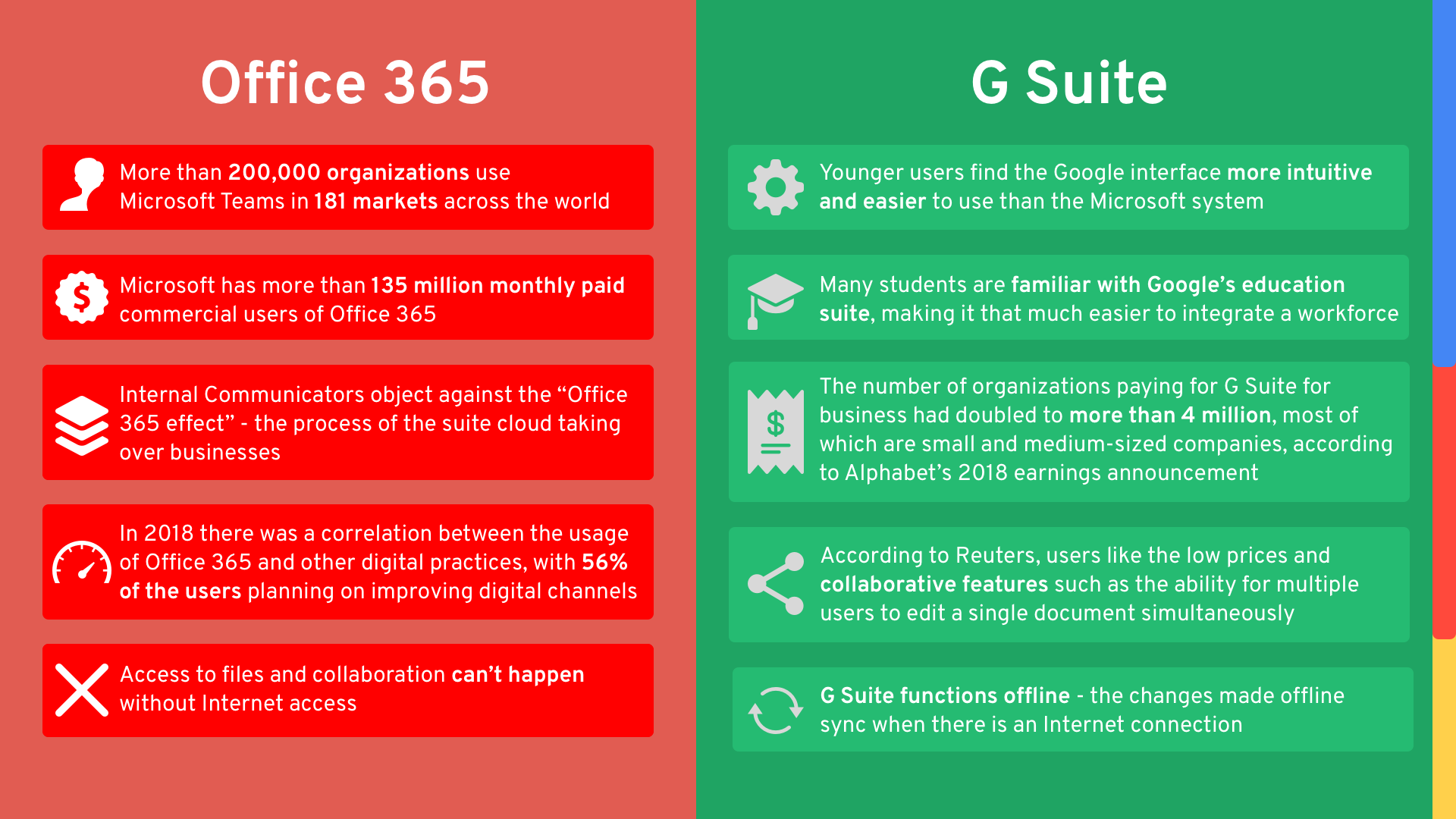
.png?width=1920&name=8%20(1).png)
